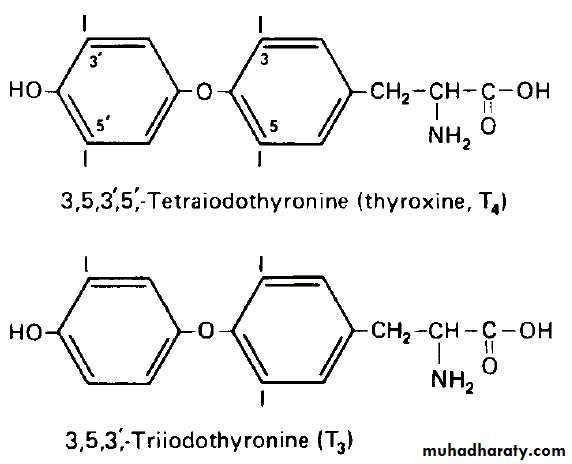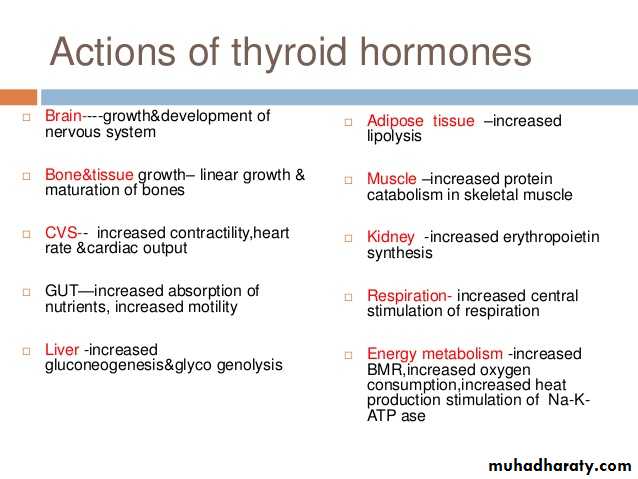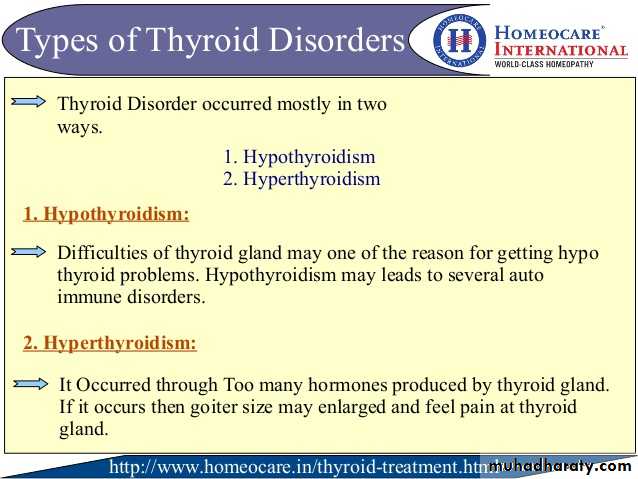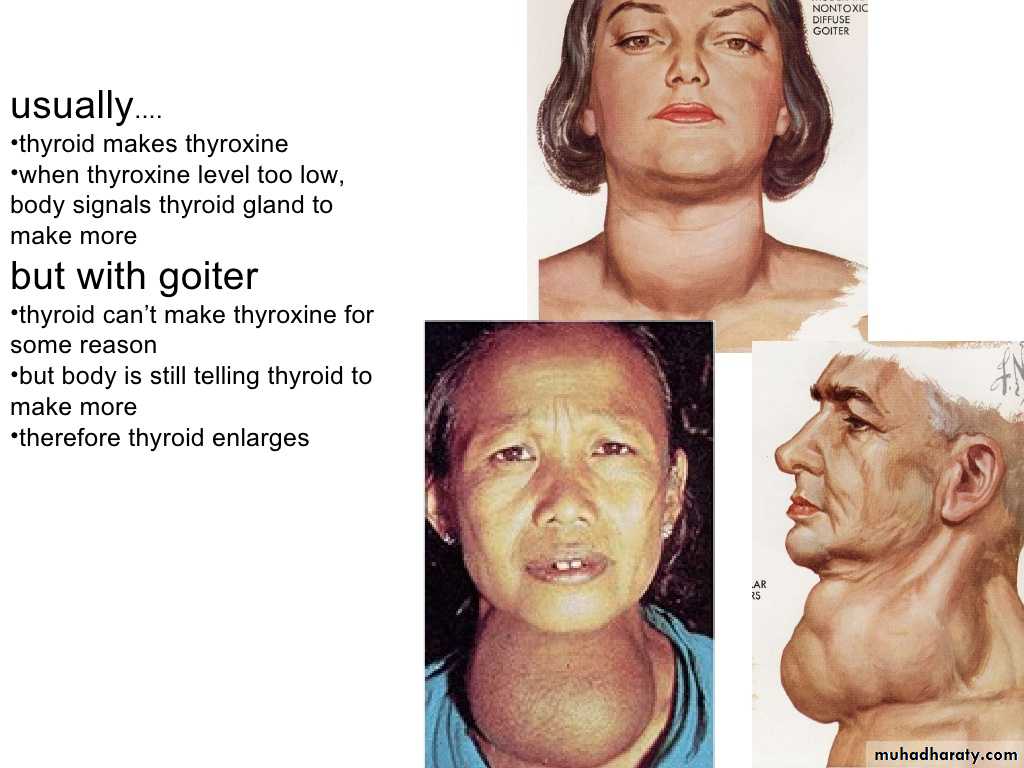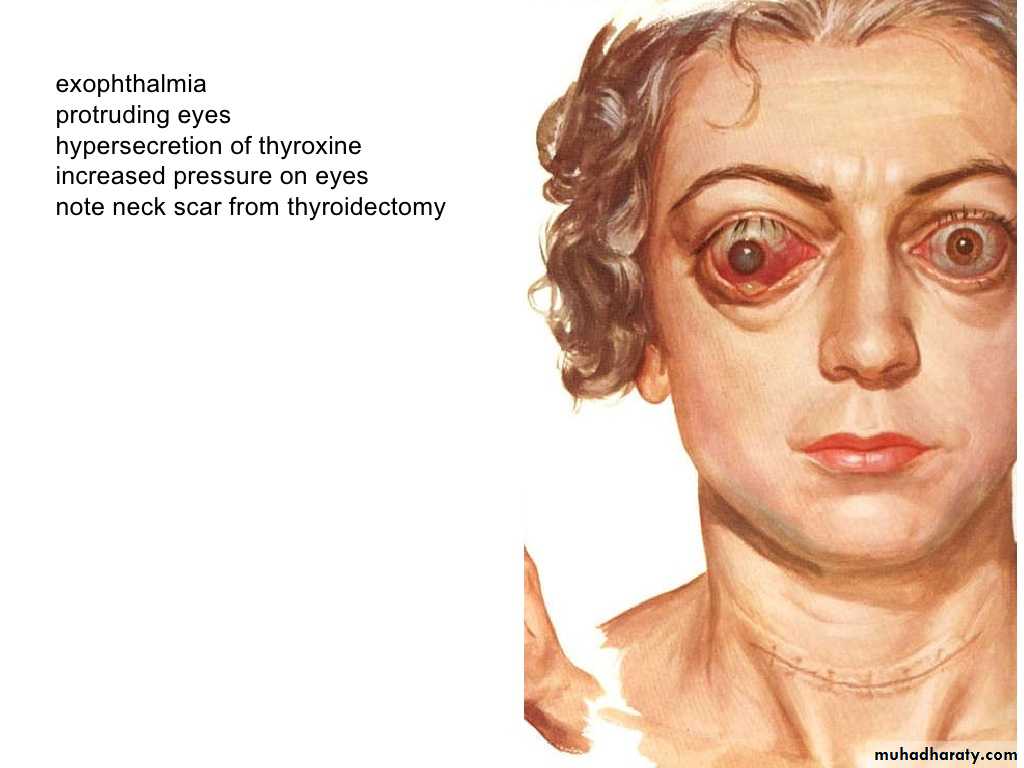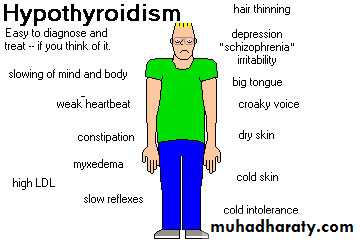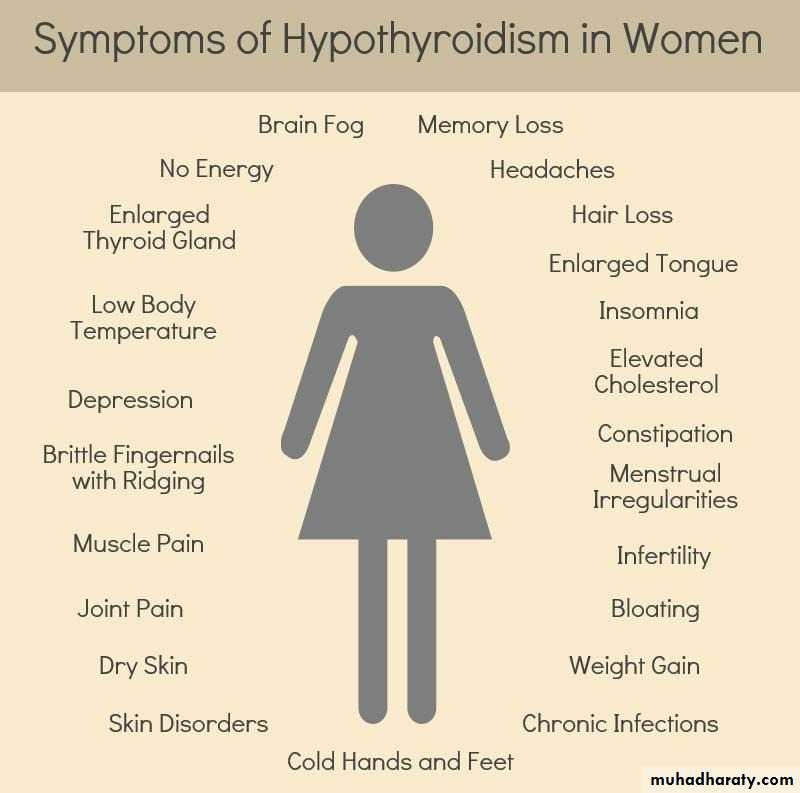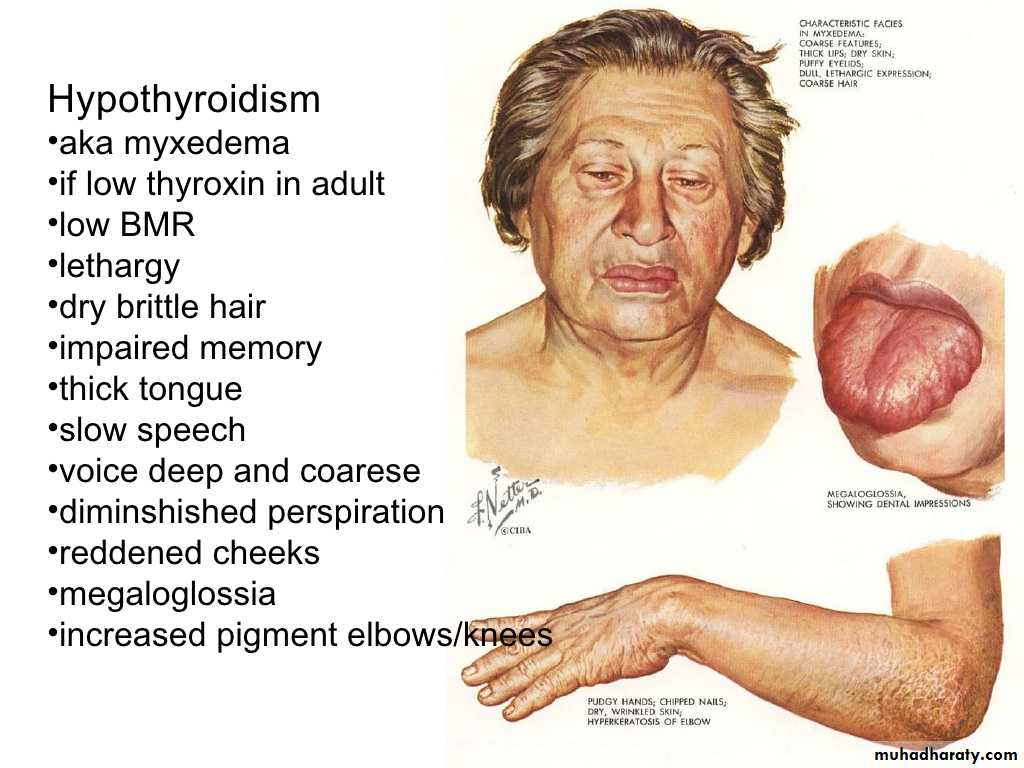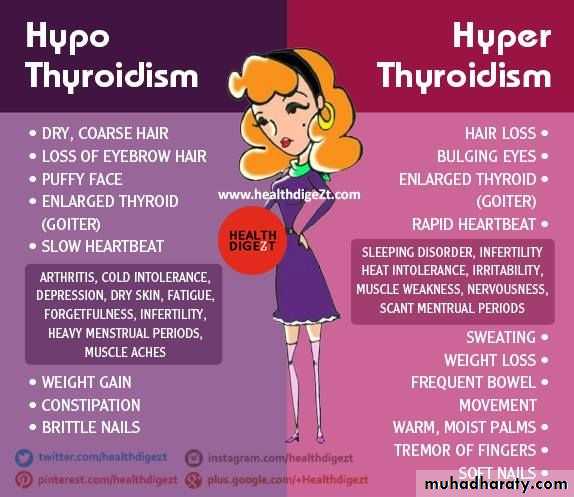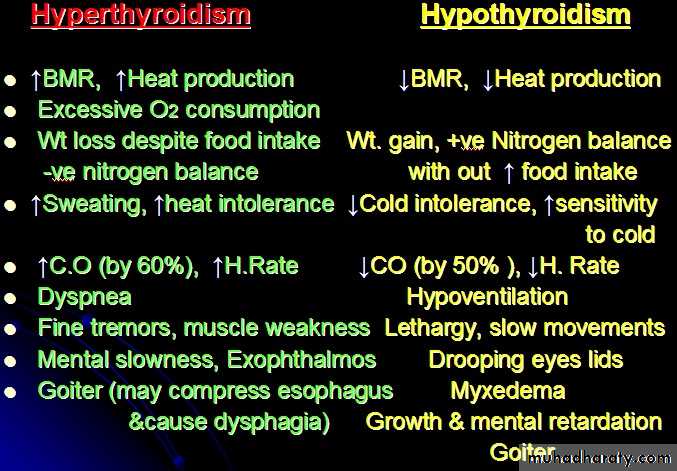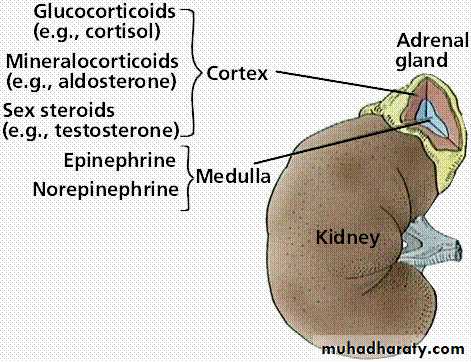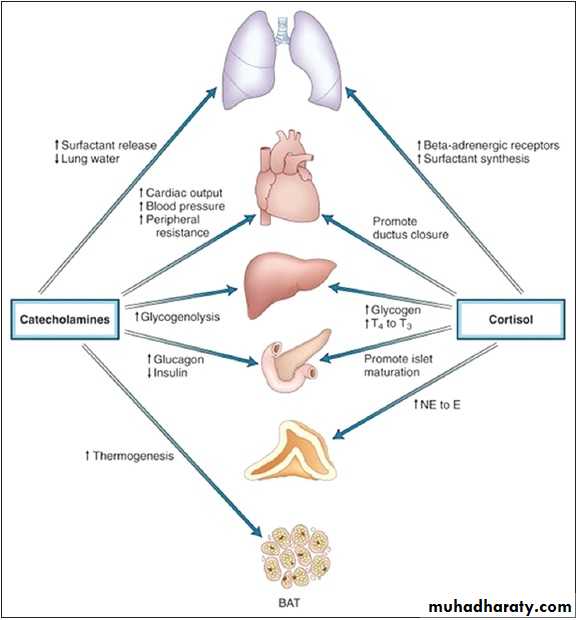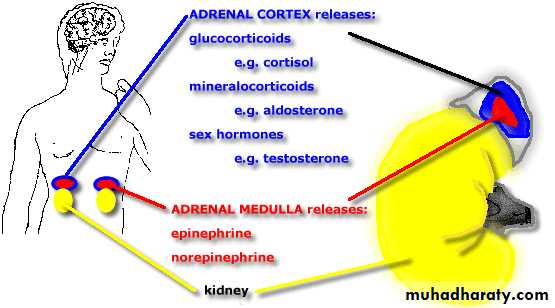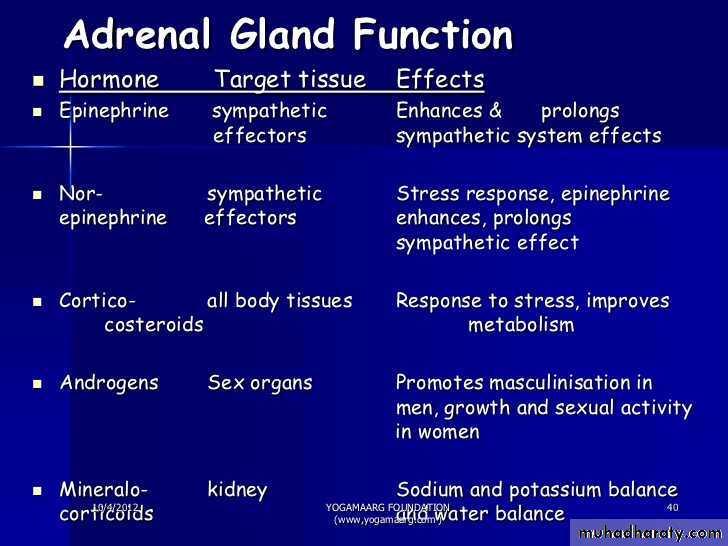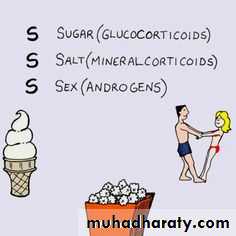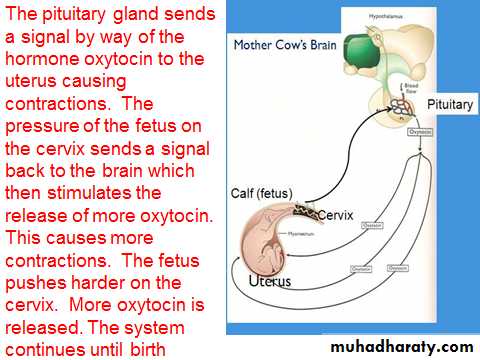Anterior pituitary hormones are:
1-Growth hormone (GH) ,Somatotropin :is a protein hormone secreted by somatotrope cells which are part of anterior pituitary gland.
The secretion is stimulated by sleep, stress, exerise, fasting, certain drugs.
GHR GH Target organ
Hypothalamus pituitaryبايو كمستري
ثاني اسنان موصل
The main function of GH: Effect on protein metabolism by increase amino acids transport to muscle cells for build protein. Effect on carbohydrate metabolism by increase glucose level in blood then stimulate gluconegenolysis and inhibit glycolysis. Effect on lipid metabolism by stimulate catabolism of T.G in adipose tissue. Retention certain minerals them its stimulate bone growth.
GH (Acromegaly) GH (Dwarfism)
Effect on protein metabolism by increase amino acids transport to muscle cells for build protein.
2 – Prolactin (PRL) Lactogenic hormone (Lactotropin)Is a protein hormone . Number and size of these cells increased in pregnancy.
The main function of PRL are:
Stimulate the breast tissue development and milk production in female, while the function in male is un cleare, however might have some role in the fertilization process.Synthesis two proteins:
- Diphospho galactosyl transferase which is responsible for lactose synthesis.
- α lact albumin which is develop the first enzyme to covert:
Glucose Galactose
PRH PRL Target organ
3- Gonadotrophic hormones
1- Follicle-Stimulating Hormone(FSH):-FSH produced by gonadotropine cells which are part of anterior pituitary gland.
It is a glycoprotein.
The main function of FSH:
In female:-
Stimulate the growth of ovarian follicles.
In male:-
Stimulate the growth of spermatogenesis.
2- Luteinizing Hormone(LH):-LH produced by gonadotrop cells which are part of another pitutary gland.The main function of LH:In female:- Stimulate the ova synthesis and corpus luteum synthesis . Stimulate estrogen and progesterone synthesis.In mail:- Stimulate testosterone synthesis.LHRH LH and FSH
4- Thyotropin (Thyroid stimulating hormone) (TSH)
TSH produced by thyrotrop cell which are part of anterrior pitutary gland.TSH is glycoprotein .It is combine with plasma membrane receptor by activation adenylate cyclase to convert:ATP c-AMP (second messenger)which response of TSH action.
The main function of TSH:- Stimulate the thyroid hormone (T3,T4).- Control of iodide concentration and converted it to organic compound by binding with thyroglobulin then it was hydrolyze.- Increase the concentration and synthesis of protein, phospholipid and nuclic acid.- Lipolysis the nutrient lipid in adipose tissues. TRH TSH T3,T4hypothalamus anterial pituitary target hormone
5- Adrencorticotropic hormone (ACTH):-
The ACTH is poly peptide consist of 39 amino acids.
The main function of ACTH :-1- Increased steroid hormone from adrinal cortix by conversion cholesterol to pregnenolone.( the precursor for all steroid) hormones).
2-Regulate production and secretion all adrinal cortix hormones.3-Transfer the unsaturated fatty acid from adipose tissues to blood plasma.4-Increase synthesis of ketone bodies. 5-Decrease synthesis of urea from amino acid.6-Delay the loss of adrinal cortix hormones in liver.
6-Melanocyte-stimulating hormone (MSH):
Also called melanotropin hormone. Are a family of peptide hormones produced by the skin, pituitary gland and hypothalamus in response to ultraviolet (UV) radiation that are produced by cells in the intermediate lobe of the pituitary gland.The main function:
1- MSH stimulate the production and release of melanin in skin ,hair and eyes. It does this by inducing skin cells called melanocytes to produce a pigment called melanin.2- MSH actions in the brain have effects on appetite and sexual arousal.
An increase in MSH will cause darker skin in humans. MSH increases in humans during pregnancy. This, along with increased estrogens, causes increased pigmentation in pregnant women.
The MSH include α-MSH, β-MSH, and γ-MSH. They are distinguished from one other by their preferential binding to different melanocortin receptors .
Different levels of MSH are not the major MSH of racialعنصري variation in skin colour. However, in many red-headed people, and other people who do not tan well, there are variations in their hormone receptors, causing them to not respond to MSH in the blood.
What happens if I have too much melanocyte-stimulating hormone?
A direct consequence of high levels of MSH is increased production of melanin. This can occur as a result of prolonged exposure to the sun or skin tanning. However, people with a high blood level of MSH do not necessarily tan very well or have even skin pigmentation. Very fair skinned people tend to produce less melanin due to variations in their melanocyte-stimulating hormone receptors, which means they do not respond to MSH levels in the blood.
Hyperpigmentation or abnormal darkening of the skin is found in patients with primary adrenal insufficiency, the adrenal glands do not produce enough hormones (including cortisol). This leads to a positive feedback loop where the hypothalamus stimulates the pituitary gland to release more ACTH to try and stimulate the adrenal glands to produce more cortisol. ACTH can be broken down to produce MSH leading to hyperpigmentation of the skin.
What happens if I have too little melanocyte-stimulating hormone?
A deficiency in MSH results in a lack of skin pigmentation and subsequent loss of natural protection from UV rays of the sun. In secondary adrenal insufficiency, damage to the pituitary gland prevents release of ACTH and MSH and there is reduced pigmentation of the skin.MSH deficiency can cause increased inflammation, pain, and sleeping problems as well as a reduction in the levels of anti-diuretic hormone(ADH) which causes thirst and frequent urination. MSH deficiency may also result in increased food intake and obesity.
Vsopressin
Vasopressin, also known as antidiuretic hormone (ADH), is a neurohypophysial hormone found in most mammals.
Vasopressin is a peptide hormone.
Most of it is stored in the posterior pituitary.Functions
One of the most important roles of ADH is to regulate the body's retention of water in the body; it is released when the body is dehydrated and causes the kidneys to conserve water, thus concentrating the urine and reducing urine volume. At high concentrations, it also raises blood pressure by inducing moderate vasoconstriction.It also increases peripheral vascular resistance, which in turn increases arterial blood pressure. It plays a key role in homeostasis, by the regulation of water, glucose, and salts in the blood.
Increasing the water permeability of distal convoluted tubule and collecting duct cells in the kidney, thus allowing water reabsorption and excretion of more concentrated urine, i.e., antidiuresis
oxytocin
Oxytocin is used to cause contraction of the uterus in order to start labor or increase the speed of labor, and to stop bleeding following delivery. For this purpose, it is given either by injection into a muscle or into a vein.
The use of oxytocin as excessive contraction of the uterus that can cause distress in an unborn baby. Common side effects in the mother include nausea and a slow heart rate. Serious side effects include water intoxication with an excessive dose and uterus rupture. Allergic reactions may also occur.
Oxytocin is normally produced in the hypothalamus.It plays a role in social bonding, sexual reproduction in both sexes, and during and after childbirth. Oxytocin is released into the bloodstream as a hormone in response to stretching of the cervix and uterus during labor and with stimulation of the nipples from breastfeeding. This helps with birth, bonding with the baby, and milk production
In lactating (breastfeeding) mothers, oxytocin acts at the mammary glands, causing milk to be 'let down' into subareolar sinuses, from where it can be excreted via the nipple.
Thyroid gland
The thyroid gland is a butterfly-shaped organ located in the base of the neck. It releases hormones that control metabolism.The thyroid hormones, triiodothyronine (T3) and its prohormone, thyroxine (T4), are tyrosine-based hormones produced by the thyroid gland that are primarily responsible for regulation of metabolism.
T3 and T4 are partially composed of iodine. A deficiency of iodine leads to decreased production of T3 and T4, enlarges the thyroid tissue and will cause the disease known as simple goitre.
The major form of thyroid hormone in the blood is thyroxine (T4), which has a longer half-life than T3.
T4 is converted to the active T3 within cells by deiodinases (5'-iodinase). These are further processed by decarboxylation and deiodination. All three isoforms of the deiodinases are selenium-containing enzymes, thus dietary selenium is essential for T3 production.
The main functions:
The thyroid's hormones regulate vital body functions, including:Breathing
Heart rateCentral and peripheral nervous systems
Body weight
Muscle strength
Menstrual cycles
Body temperature
Cholesterol levels
How the Thyroid Gland Works
The thyroid is part of the endocrine system, which is made up of glands that produce, store, and release hormones into the bloodstream so the hormones can reach the body's cells. The thyroid gland uses iodine from the foods you eat to make two main hormones:
Triiodothyronine (T3)
Thyroxine (T4)It is important that T3 and T4 levels are neither too high nor too low. Two glands in the brain—the hypothalamus and the pituitary communicate to maintain T3 and T4 balance.
The hypothalamus produces Thyroid Releasing Hormone (TRH) that signals the pituitary to tell the thyroid gland to produce more or less of T3 and T4 by either increasing or decreasing the release of a hormone called thyroid stimulating hormone (TSH).
When T3 and T4 levels are low in the blood, the pituitary gland releases more TSH to tell the thyroid gland to produce more thyroid hormones.
If T3 and T4 levels are high, the pituitary gland releases less TSH to the thyroid gland to slow production of these hormones.
Why You Need a Thyroid Gland??
T3 and T4 travel in the bloodstream to reach almost every cell in the body. The hormones regulate the speed with which the cells/metabolism work. For example, T3 and T4 regulate heart rate and how fast your intestines process food. So if T3 and T4 levels are low, your heart rate may be slower than normal, and you may have constipation/weight gain. If T3 and T4 levels are high, you may have a rapid heart rate and diarrhea/weight loss.Listed below are other symptoms of too much T3 and T4 in your body (hyperthyroidism):
AnxietyIrritability or moodiness
Nervousness, hyperactivity
Sweating or sensitivity to high temperatures
Hand trembling (shaking)
Hair loss
Missed or light menstrual periods
The following is other symptoms of too little T3 and T4 in your body (hypothyroidism):
Trouble sleepingTiredness and fatigue
Difficulty concentrating
Dry skin and hair
Depression
Sensitivity to cold temperature
Frequent, heavy periods
Joint and muscle pain
Adrenal gland:-1- Adrenal medulla.2- Adrenal cortex.
Adrenal medulla hormones
The adrenal medulla: is part of the adrenal gland. It is located at the center of the gland, being surrounded by the adrenal cortex. It is consisting of cells that secrete epinephrine (adrenaline), norepinephrine (noradrenaline), and a small amount of dopamine.The adrenal medulla is the principal site of the conversion of the amino acid tyrosine into the catecholamines epinephrine, norepinephrine, and dopamine.
In response to stressors such as exercise or imminent danger, medullary cells release the catecholamines adrenaline and noradrenaline into the blood. Adrenaline composes about 85% of the released catecholamines, and noradrenaline the other 15%.
Adrenaline and noradrenaline include increased heart rate and blood pressure, blood vessel constriction in the skin and gastrointestinal tract, smooth muscle, dilation, and increased metabolism, all of which are characteristic of the fight-or-flight response. Release of catecholamines is stimulated by nerve impulses, and receptors for catecholamines are widely distributed throughout the body.
Effects:
Catecholamines cause general physiological changes that prepare the body for physical activity (fight-or-flight response). Some typical effects are increases in heart rate, blood pressure, blood glucose levels, and a general reaction of the sympathetic nervous system. Some drugs, raise the levels of all the catecholamines.Adrenal cortex hormones
adrenal cortex mediates the stress response through the production of mineralocorticoids and glucocorticoids, such as aldosterone and cortisol, respectively. It is also a secondary site of androgen synthesis. Recent data suggest that adrenocortical cells under pathological as well as under physiological conditions show neuroendocrine properties; within the normal adrenal, this neuroendocrine differentiation seems to be restricted to cells and might be important for an autocrine regulation of adrenocortical functionThe adrenal cortex produces a number of different corticosteroid hormones.
Mineralocorticoids
The primary mineralocorticoid, aldosterone, is produced in the adrenocortical zona glomerulosa by the action of the enzyme aldosterone synthase . Aldosterone is largely responsible for the long-term regulation of blood pressure. Aldosterone effects on the distal convoluted tubule and collecting duct of the kidney where it causes increased reabsorption of sodium and increased excretion of both potassium (by principal cells) and hydrogen ions (by intercalated cells of the collecting duct).
Glucocorticoids:
The primary glucocorticoid released by the adrenal gland is cortisol in humans and corticosterone in many other animals. Its secretion is regulated by the hormone ACTH from the anterior pituitary. Upon binding to its target, cortisol enhances metabolism in several ways:It stimulates the release of amino acids from the body
It stimulates lipolysis, the breakdown of fatIt stimulates gluconeogenesis, the production of glucose from newly released amino acids and lipids
It increases blood glucose levels in response to stress, by inhibiting glucose uptake into muscle and fat cells
It strengthens cardiac muscle contractions
It increases water retention
Androgens:
Testosterone: a hormone with a wide variety of effects, ranging from enhancing muscle mass and stimulation of cell growth to the development of the secondary sex characteristics.Dihydrotestosterone (DHT): a metabolite of testosterone, and a more potent androgen than testosterone in that it binds more strongly to androgen receptors.
Androstenedione (Andro): an androgenic steroid produced by the testes, adrenal cortex, and ovaries. While androstenediones are converted metabolically to testosterone and other androgens, they are also the parent structure of estrone.











































